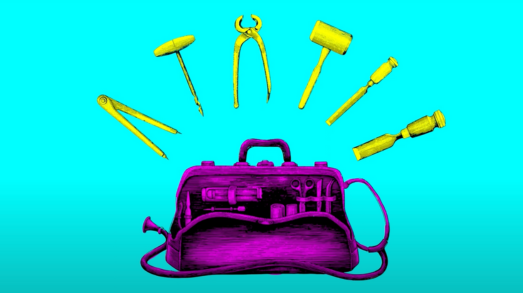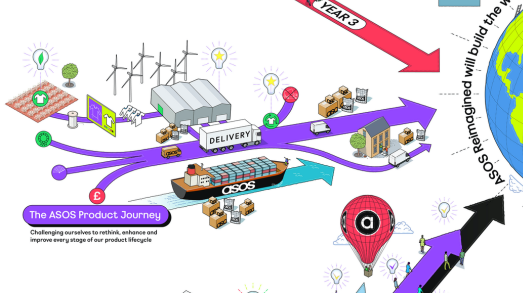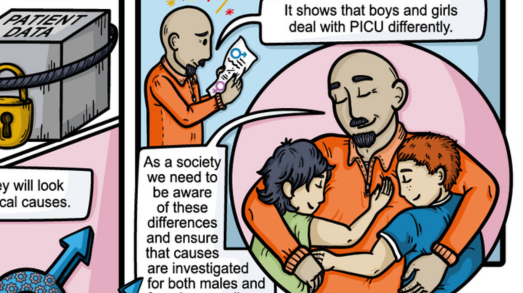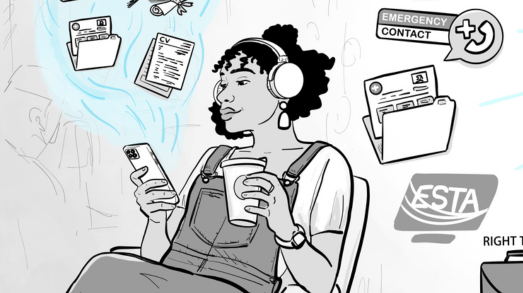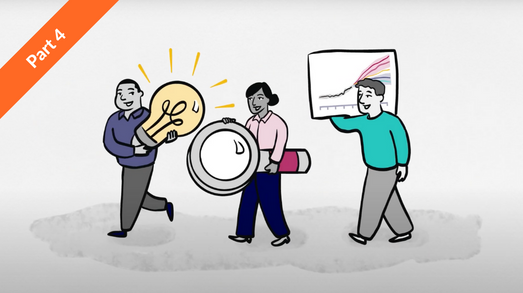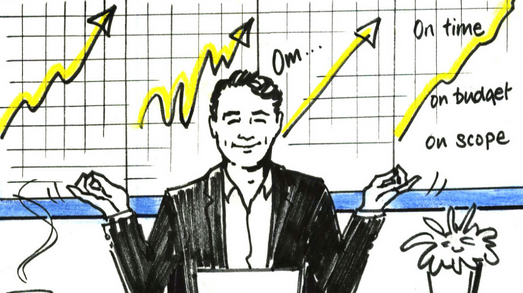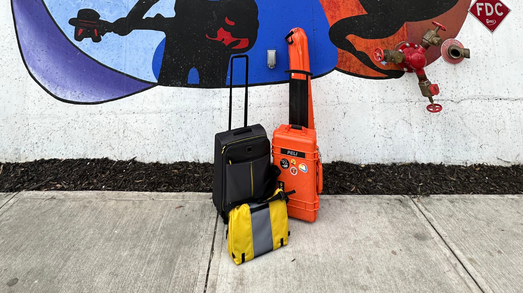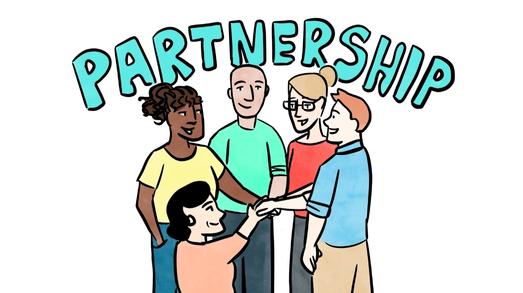Visual techniques such as graphic recording, facilitation, rich-picture mapping and storyboarding, in a setting where you have disparate groups of people, complex situations and cultural barriers to collaborate, achieve unbelievable results, every time, for the simplest of reasons. Once you see visual thinking in action, it will speak for itself.
Having used a visual approach in many medium to global organisations (in multiple language groups), over a couple of decades, I have seen that clarity at the ‘big picture’ level can bring to the surface insights that are ‘lost in translation’, drive those hidden requirements the business have never been able to articulate, and all of this without engaging hordes of consultants. Usually, the truth and the capability are locked away in your own people in the business, often shrouded in historical organisational battlefields, divided by language and conflict of motivation / objectives or the perception that it is too difficult.
Firstly, I have to recognise that not every situation needs a visual approach; for example, I would not advocate using it for discussing a legal draft, or in a fixed agenda board meeting, or maybe in a procurement process. So, I intend to focus my comments only on those meetings that are precursors to a ‘discovery’ or change initiative where the subject-matter is scoped, but the exact content needs to be worked through. As such, it may involve a multi-disciplinary team with some unknown variables and ambiguity as to possible outcomes.
Implementing visual working practice:
So, let’s look at a possible situation; the team shuffles in, with their notebooks, maybe laptops (good for hiding behind) and choose their places around the table. Some go for the ‘power positions’ others sit by their friends and allies, and the remaining folk look to find seats where they can have the lowest engagement and profile possible. The agenda goes up on the screen, the heart sinks, “This is going to be torture, when is the coffee break?” The truth is that everyone feels that this is going to take months and have avoided it so well thus far so are in no mood to put some ‘skin in the game’, just to fail. This is a hard hill to climb!
Then someone is introduced who says we can achieve this in a creative and fun way with no one feeling exposed or threatened. “Join in. We are going to describe our situation as a series of drawings, maybe some pictures.” No ‘wire-diagrams’ no flow-charts, just a landscape. A big picture of what we all know to be true and our experience of working here.
Guess what is happening around the room now?
- People feel valued just by being asked for their contribution.
- It becomes fun creating ‘awkward problem’ statements, with no blame or antagonism.
- Instead of dealing with issues across a table, they are side by side exploring the situation with a single wall board in front of them.
- There is openness and the previous negative, cynical attitudes which can take hold are slowly eased when they can see that everyone is there to make things better and more positive for everybody. So, it pointless to hide or resist. Jump in!
Half way through the day you would have achieved so much, that energy levels are rising, not diminishing. I have seen this happen every time. Even in one situation when a British team arrives in New Hampshire, USA, and spends 5 full days visually laying out their current processes and barriers, before going on to visually prototype possible solutions. No one is taking notes, there are no 25-page documents of minutes afterwards that sit on your to-do guilty list. In that example we mapped out a complete procurement process, including the engineers, suppliers and some customers. Everyone tumbled in and just developed a ‘big-picture’ of the world as they saw it, solving issues along the way. It was fun and energising – more importantly it created hope.
Visual approaches of working can create one single picture of almost any situation, it will typically have pictures, diagrams and words, but it can also be ‘layered’ for greater impact. For example, you create a base level landscape, and superimpose the detail in separate layers, so that the big-picture at the end can be ‘peeled away’ and simplified for vested interests or particular situations. Layering allows for much more analytical processes to be attempted by the group, looking at the detail within a big-picture is one of the most successful ways of learning and solving problems. ‘Right-brain’ and ‘left-brain’ energy deployed in equal proportion at the same event for powerful results.
Key observations and gains from visual thinking:
- Ideas / concepts live longer when ‘framed’ as a picture rather than just using words (excluding poetry!). Imagine an event like a wedding, even yours, would you reach for a transcript of the event, including the text of the speeches, or would the wedding album evoke more memories and emotions?
- Different parts of our brain are engaged when we take our speech processing powers and creatively turn them into images. Some people see things clearly, and can describe them, others are more logical, linear thinkers … visual approaches allow both to work together on one output. In so doing, it is far more likely that this ‘visual’ is etched on your memory for later recall. For those of us who are somewhat dyslexic …. we have to use our non-word side of our brain to process and communicate.
- Working as a group makes it difficult to do what we call, ‘viewpoint exploration’ as the views of some more reticent folk can be drowned and lost to the bolder, brasher team members. If you are seeking change, it is likely the ‘bold and brash’ got you into the position you are in now, necessitating the change, so listen and learn to all viewpoints! One technique would be, split a group up, with the same scope and get them to visually create the ‘As-is’ or ‘future’ state. Then look at how different each viewpoint expresses priceless insights that can now become a rich picture of future possibilities.
- Behavioural and cultural (even language) barriers can be swiftly dismissed when we stop reacting, pointing fingers and start pointing pens – at the visual recording you are creating. It is a common metaphor that engages us deeply.
- Creating a big visual picture establishes context, it is only when you get the context right can the subsequent analysis (actions) start and be conducted in a way to achieve a superior outcome. So, you are experiencing an organisational ‘hot-spot’ somewhere; visual mapping if done correctly, can provide the basis to analyse what is happening, search out the probable cause and what you need to solve. If done well by an experienced practitioner, you may be able to see;
- Problems with how the work is structured, either process or organisational
- That objectives have been designed and are creating conflict between parties
- That people do not have the right tools to do the job effectively
- The cost/price/budget structure is inappropriate
- The KPIs are not driving the right behaviours for business success
- And more ….
- Good teams working visually prototype their potential solutions on paper, testing and learning from such a method, “Will this work, are we covering all the bases?” They do this before jumping to conclusions and rushing to implement a poorly considered option.

Goals, alignment, engagement & psychological behaviour:
- Goals – Often part of the orthodoxy of a business, forming wall-art, PowerPoint slides and handouts. But, not in the ‘hearts and minds’ because the process did not engage or align teams. To get goals achieved, everyone should not only understand them but act and collaborate.
- Alignment – One of the toughest gains for a business to achieve. It needs proper engagement and wholehearted passion to take the actions that all lead to achieving the same outcome. Without good alignment between all disparate efforts, we can create a car crash on the way to our goal.
- Engagement – In today’s environment, working from home, endless screen meetings – we can just want to run away from more engagement. We want less! People need to feel connected to the ‘end-result’, feel that they have had their say, and their contribution valued to have a stake in the outcome. Even in online meetings, creating a visual representation can transform the mundane to become a really good engagement of ‘hearts and minds.’
- Psychological Behaviour – There are 4 main behaviour types; 1. the driver (promoting); 2. the controller (order please!); 3. consensual; 4. consultative. A more visual approach to working across a team accommodates and allows the needs, strengths and anxieties of each type to express themselves, maintaining better group cohesion but more importantly great outcomes. If you do not appreciate that these behaviours have to be accommodated and harnessed, teams under perform with conflict and bias set to be repeating patterns.
Finally:
People want to feel that their work adds meaning to their life and achieve a sense of personal purpose like never before, giving them a way to identify with the aims and objectives of the business. Getting their engagement is a great outcome for everyone. Visual methods of working are the most powerful tool in your kit-bag.
About Philip:
Philip is an inspirational leader bringing a human touch to building teams and companies, creating strategic vision and better execution. He is Chairman for a number of small businesses providing advisory services to different ventures. Philip has the integrity and character to bring together financial, operational, marketing and business development experience to push past usual issues and obstacles that trap many companies into recurring patterns of failure. His passion lies in working with senior management to lead teams in new directions.


